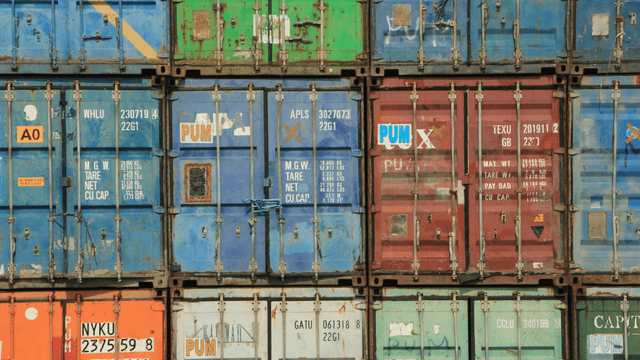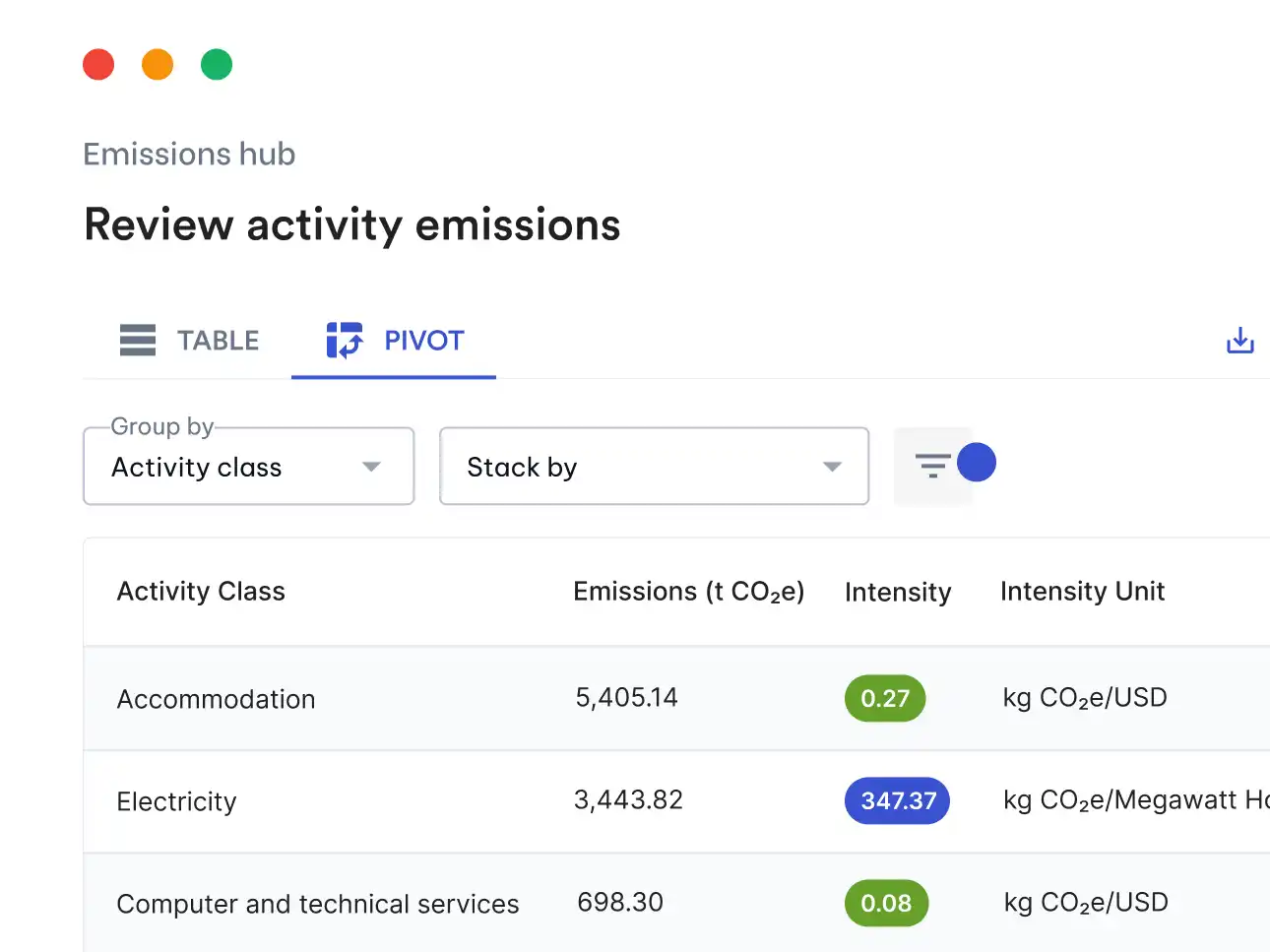As of 1 January 2025, climate reporting is no longer optional for Australian companies. It is now a legal requirement under the Australian Sustainability Reporting Standards (ASRS), marking a major shift in how organisations must manage and disclose their climate impacts.
For large organisations, choosing an emissions tracking platform is now a critical business decision. It affects not only compliance, but also financial risk, investor confidence, and strategic planning. The right platform should make reporting easier, data more accurate, and your business more resilient.
This guide breaks down the key considerations for selecting a platform that meets Australia's new reporting obligations and supports your decarbonisation goals.
The new regulatory landscape: ASRS and NGER
Mandatory climate reporting is now in effect for many Australian firms. From 1 January 2025, entities above certain thresholds must disclose climate-related financial information in line with the ASRS, which includes AASB S1 (General Requirements) and AASB S2 (Climate-related Disclosures) (source).
These standards are aligned with global frameworks developed by the International Sustainability Standards Board (ISSB) and require disclosure of greenhouse gas (GHG) emissions across Scopes 1, 2 and 3, as well as climate risks and opportunities. Unlike previous schemes, these disclosures must link climate risks to financial performance and strategic decision-making.
The ASRS builds on existing requirements under the National Greenhouse and Energy Reporting (NGER) scheme, which mandates reporting of operational emissions. However, NGER does not cover the full picture. ASRS expands the scope to include indirect supply chain emissions and forward-looking transition planning.
Companies that fail to comply risk more than just fines. Greenwashing enforcement is increasing, and investors are actively moving away from firms that cannot demonstrate credible climate strategies. For example, in late 2024, major Australian super funds, including AustralianSuper and HESTA, reaffirmed they would continue to pressure companies across all sectors to improve their climate disclosures and transition plans. These investors signalled that companies failing to meet expectations under frameworks like ASRS and TCFD risk losing shareholder support, including through votes against directors and reduced capital allocation.
Choosing a tool like Avarni, which is built to support ASRS compliance, can help avoid costly delays and protect your organisation’s reputation.
Why spreadsheets are a liability for emissions tracking
Many businesses still rely on spreadsheets to manage emissions data. In the ASRS era, this is no longer a safe or scalable approach. Spreadsheets are prone to human error, leading to inaccurate and non-compliant disclosures. Errors can be difficult to detect and even harder to correct during assurance or audits.
Manual processes are also time-consuming, pulling teams away from strategic climate work. With limited version control and no audit trail, spreadsheets make it hard to demonstrate transparency and accountability. This increases the time and cost of third-party assurance.
Perhaps most critically, spreadsheets cannot handle the complexity of Scope 3 data. Supply chain emissions often make up more than 70 percent of a company’s footprint. Without automation and integration, gathering this data becomes a huge operational burden.
Using a dedicated emissions tracking platform removes these risks. Automated data processing, transparent calculations and built-in compliance workflows make reporting faster, more accurate and ready for assurance.
Key features of a top-tier emissions tracking platform
Not all emissions platforms are designed to handle the demands of ASRS. Below are the core capabilities every serious buyer should look for in 2025.
Automated data collection and integration
Manual data entry is no longer a sustainable option. Your emissions tracking platform should connect with key business systems like Oracle, SAP, and other financial tools to pull in accurate activity data with minimal effort. For utility data, the platform should make it easy to upload electricity and gas bills directly, removing the need to chase down usage figures manually.
Avarni supports uploads from utility providers and uses AI to automatically map your operational and financial data to the correct emissions categories across Scopes 1, 2 and 3. This reduces errors, eliminates repetitive tasks, and helps you move from raw data to accurate reporting faster.
Comprehensive Scope 1, 2 and 3 coverage
Scope 1 refers to direct emissions from owned operations. Scope 2 includes indirect emissions from purchased electricity. Scope 3 captures all other indirect emissions across the value chain, including upstream suppliers and downstream product use.
Scope 3 is the most challenging and often the most material. A leading platform must be able to model these emissions using credible data sources, supplier insights and industry databases. Avarni uses machine learning and third-party datasets to calculate Scope 3 emissions, even when supplier data is incomplete.
It should also help companies track progress against science-based targets and model future supply chain decarbonisation strategies. These are core features of platforms supporting mandatory climate reporting software.
Built-for-purpose ASRS compliance
Compliance with ASRS requires more than emissions data. It involves climate risk analysis, scenario planning, and financial disclosure. Your platform should be built with these specific requirements in mind.
Avarni includes templates, workflows and reporting structures aligned to AASB S2. It also supports broader frameworks such as the GHG Protocol and TCFD, making it easier to address both local and global reporting needs. These features help organisations stay in line with government climate disclosure policies.
Accurate and transparent emission factors
Emission factors are used to calculate emissions from activity data. The platform you choose must provide access to a large, accurate and regularly updated library of factors.
With Avarni, users can apply local default values, industry-specific factors, or upload licensed databases like ecoinvent. The platform also supports supplier-specific factors for greater accuracy in Scope 3 reporting.
Transparent emission factor management ensures your reports are not only accurate but defensible under scrutiny.
Audit-ready reporting and scenario analysis
Under ASRS, companies must be prepared for third-party assurance. Every figure in your emissions report should be traceable back to source data. A good platform will log every data input, transformation and calculation, making audits faster and less stressful.
Beyond compliance, scenario analysis tools are essential for modelling different decarbonisation strategies. Avarni allows companies to explore future emissions pathways, set internal targets, and assess the financial impacts of climate action.
Enterprise-grade security and expert support
Protecting your data is critical, especially when reporting emissions tied to financial disclosures. Look for a platform that is SOC 2 and/or ISO 27001 certified to ensure your operational and financial information is secure and audit-ready.
Rolling out emissions software can be challenging, particularly for teams new to carbon accounting. Avarni combines powerful technology with expert guidance, giving you access to sustainability specialists who support implementation, data validation, and ASRS-aligned reporting from day one.
Checklist: Choosing your emissions tracking platform
Here is a simple checklist you can use when evaluating vendors:
Conclusion: Move from complexity to clarity with the right partner
ASRS marks a significant change for Australian businesses. Climate reporting is now a core part of financial disclosure. With rising expectations from regulators, investors and customers, manual processes like spreadsheets are no longer a safe or efficient choice.
A purpose-built emissions tracking platform like Avarni transforms climate reporting from a compliance burden into a strategic advantage. By automating data collection, simplifying reporting and enabling scenario analysis, Avarni helps businesses move confidently into a low-carbon future.
If your organisation is preparing for its first ASRS-aligned report, now is the time to act. Get in touch to learn how we can simplify your emissions tracking and climate disclosure process.
Summary
- ASRS and NGER: Australian firms must now report emissions and climate risks under AASB S1 and S2, going beyond the scope of NGER.
- Spreadsheets are a liability: Manual methods are error-prone and unsuited to the scale and complexity of ASRS reporting.
- Platform features: Top platforms offer automation, full Scope 1-3 coverage, ASRS compliance tools, accurate emission factors and audit-ready outputs.
- Checklist: Use the criteria above to ensure your chosen solution is compliant, efficient and secure.
- Conclusion: Avarni provides a complete emissions tracking solution that supports compliance and helps companies lead on climate.




